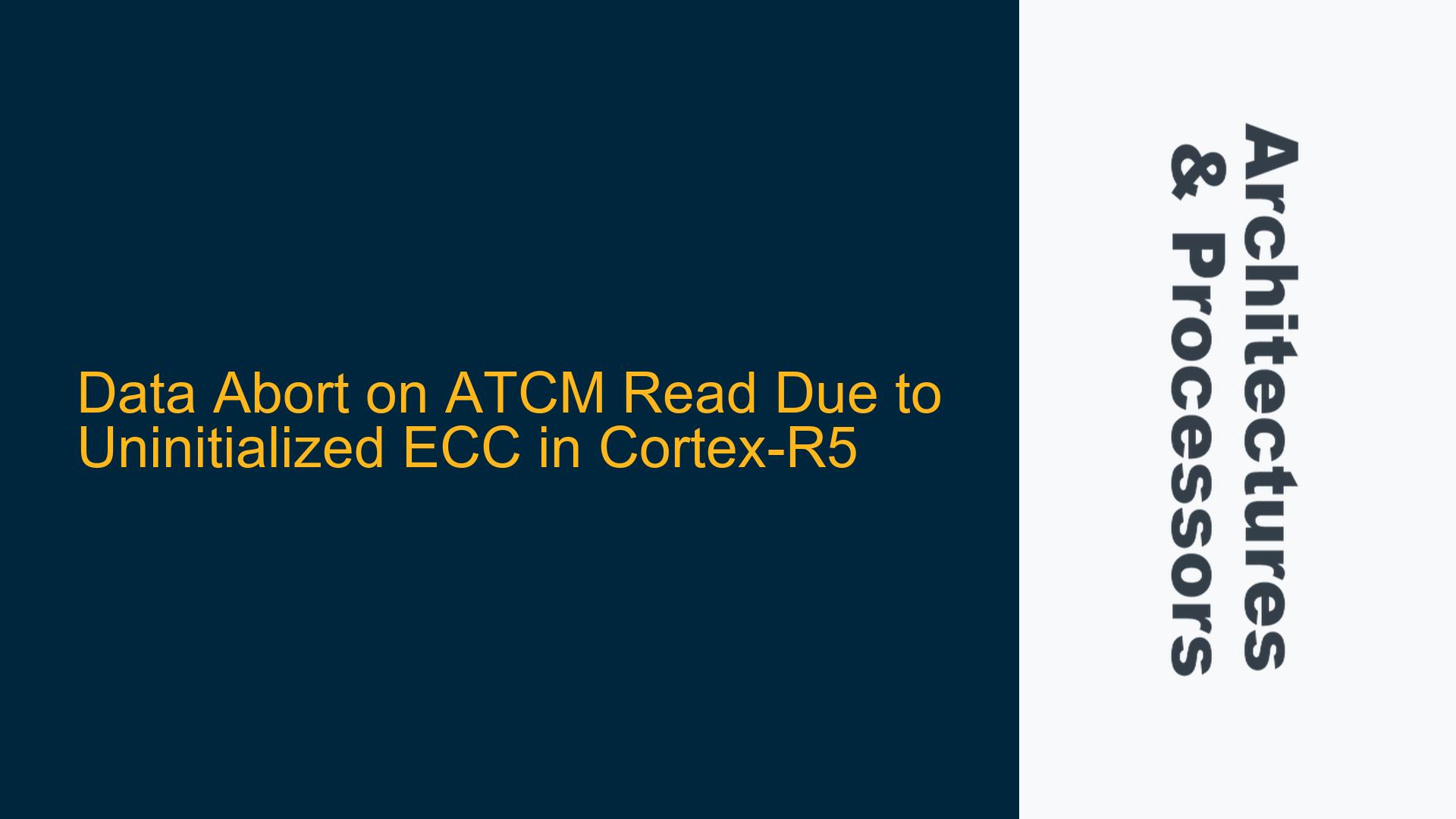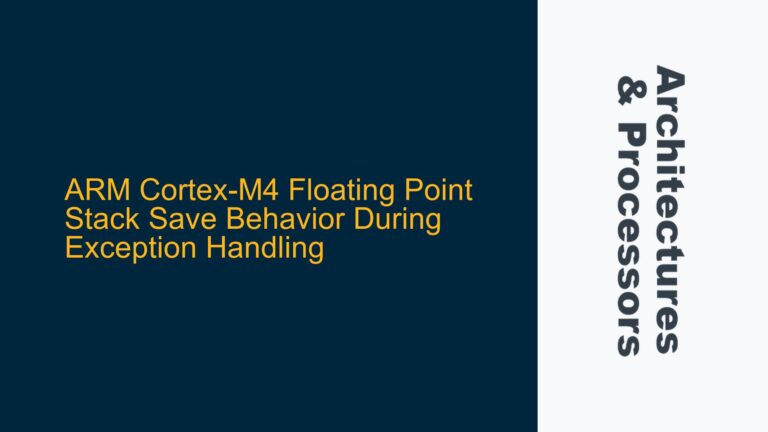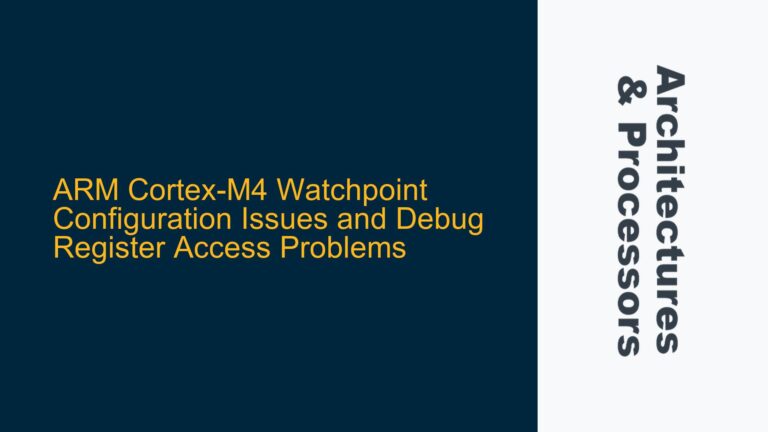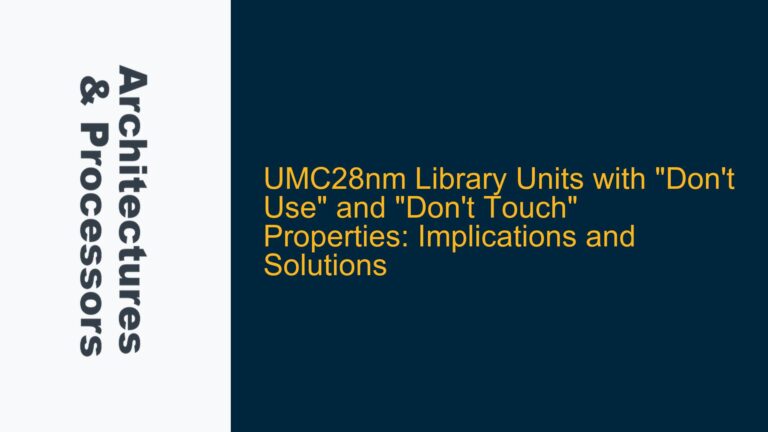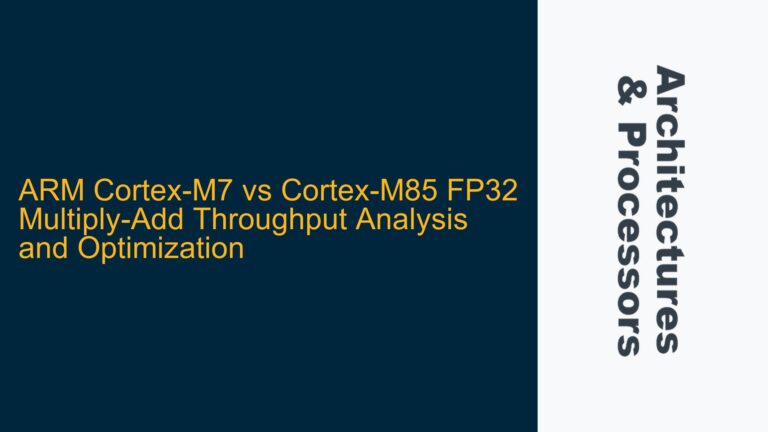ARM Cortex-R5 ATCM Read Aborts with Synchronous Parity or ECC Error
The issue at hand involves a Data Abort exception occurring during read operations from the ATCM (Tightly Coupled Memory) in an ARM Cortex-R5 processor. The abort is triggered specifically when attempting to read from certain addresses within the ATCM, while write operations to the same addresses succeed without any issues. The Data Abort handler indicates a Synchronous Parity or ECC (Error Correction Code) error, suggesting that the problem is related to memory integrity checks during read operations.
The Cortex-R5 processor, when configured with ECC protection for its TCM, performs ECC checks on read operations to ensure data integrity. If the ECC bits associated with a memory location are uninitialized or corrupted, the processor will raise a Data Abort exception during a read operation. This behavior is consistent with the observed symptoms, where writes succeed (as they calculate and store ECC bits) but reads fail due to the absence or invalidity of ECC data.
The ATCM in this scenario is 64KB in size, starting at address 0x0, and the problematic addresses (e.g., 0x2a08) fall within the valid range. The issue is particularly noticeable with addresses ending in 8, which may indicate alignment or ECC initialization patterns. The MPU (Memory Protection Unit) has been disabled, ruling out permission-related causes for the Data Abort.
ECC Initialization and Synchronous Parity Error Mechanism
The root cause of the Data Abort lies in the ECC protection mechanism of the Cortex-R5’s ATCM. ECC is a hardware-based error detection and correction feature that adds additional bits to memory to detect and correct single-bit errors and detect multi-bit errors. In the Cortex-R5, ECC checks are performed during read operations, while ECC bits are calculated and stored during write operations.
When ECC is enabled for the ATCM, the memory controller expects valid ECC bits to be present for every memory location during a read operation. If the ECC bits are uninitialized or invalid, the memory controller will raise a Synchronous Parity or ECC error, resulting in a Data Abort. This explains why write operations succeed (they initialize the ECC bits) but read operations fail (they check the ECC bits).
The Cortex-R5 provides two registers to diagnose Data Aborts: the Data Fault Status Register (DFSR) and the Auxiliary Data Fault Status Register (ADFSR). These registers provide detailed information about the cause of the Data Abort, including whether it was due to an ECC error. In this case, the DFSR indicates a Synchronous Parity or ECC error, confirming the role of ECC in the issue.
The problem is exacerbated by the fact that the ATCM is used for the stack, and the POP instruction is used to read data from the stack. If the stack memory has not been properly initialized with valid ECC bits, any attempt to read from it will trigger a Data Abort.
Initializing ATCM with Valid ECC Bits and Handling Data Aborts
To resolve the Data Abort issue, the ATCM must be properly initialized with valid ECC bits before any read operations are performed. This can be achieved through a process called preloading the TCM, which involves writing known values to the entire ATCM to initialize the ECC bits.
The following steps outline the process for initializing the ATCM and handling Data Aborts:
-
Preload the ATCM: Write a known pattern (e.g., 0x00000000) to the entire ATCM. This will initialize the ECC bits for all memory locations, ensuring that subsequent read operations do not encounter uninitialized ECC bits. The preloading process should be performed during system initialization, before any read operations are attempted.
-
Enable ECC Correction: If the Cortex-R5 supports ECC correction, ensure that it is enabled. ECC correction can automatically correct single-bit errors, preventing Data Aborts in cases of minor ECC errors. This is configured through the processor’s system control registers.
-
Handle Data Aborts Gracefully: Implement a Data Abort handler that dumps the contents of the DFSR and ADFSR to diagnose the cause of the abort. This information can be used to identify whether the abort was due to an ECC error or another cause. The handler should also log the address that caused the abort for further analysis.
-
Verify Memory Alignment: Ensure that memory accesses are properly aligned, especially for stack operations. Misaligned accesses can sometimes trigger ECC errors, particularly in systems with strict alignment requirements.
-
Test with Different Patterns: After preloading the ATCM, test the system with different memory patterns to ensure that the ECC initialization is effective. This can help identify any remaining issues with specific address ranges or patterns.
By following these steps, the Data Abort issue can be resolved, ensuring reliable operation of the Cortex-R5 processor with ECC-protected ATCM. Proper initialization and handling of ECC are critical for systems that rely on the integrity of their tightly coupled memory.
